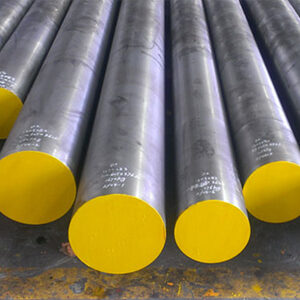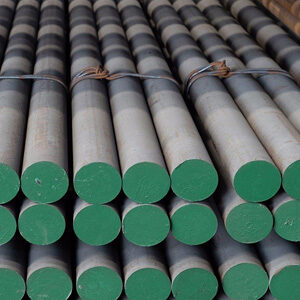Tool Steel for Precision Machining: Dimensional Stability and Tool Life
Pendahuluan
Precision machining operations like milling, turning, boring and drilling enable manufacturing parts to fine tolerances and surface finishes. The tool steel alloys used for fabricating cutting tools, fixtures, guides and other critical machinery components impact machining accuracy and productivity.
This article explores the stringent demands of precision machining applications and how specialized tool steel selection, treatments, coatings and geometric designs achieve optimal dimensional stability and tool life for superior machined part quality and consistent production. The right tool steels empower next-generation high precision manufacturing.
Challenging Needs of Precision Machining
 Precision machining involves unique challenges:
Precision machining involves unique challenges:
- Extreme dimensional and form tolerances below 0.001”
- Part surface finishes finer than 10 microinches
- Minimal allowable vibration, deflection or chatter
- Avoiding heat damage to temper sensitive alloys
- No burring, tearing, or distortion of delicate features
- Continuous production with minimal machine downtime
- Extended tool life through millions of operating cycles
- Removing abrasive materials like hardened or plated steels
These stringent requirements push tool steel materials, designs and processing to the limits.
Key Baja Perkakas Properties and Characteristics
To address precision machining demands, tool steels must deliver:
Stabilitas Dimensi
Minimal thermal distortion, growth, or deflection under machining stresses preserves precision calibrations and sizing.
Hot Hardness
Hardness retention at elevated temperatures from high speed machining prevents tool wear and loss of tolerance control.
Ketahanan aus
Long production runs and abrasive materials necessitate exceptional tool steel wear performance and longevity.
Thermal Conductivity
Effective heat dissipation away from cutting interfaces helps avoid heat damage and promotes dimensional control.
Torsional Strength
Resisting elastic twisting deflections enables precision boring, drilling, and turning operations.
Ketangguhan
Sufficient fracture resistance prevents brittle tool failures that disrupt production and scrap parts.
Surface Finish
Smooth tool steel surfaces with precise geometries impart minimal surface roughness to finished workpieces.
Tailored Treatments
Optimized performance depends on specialized heat treatment, coatings and other enhancements applied to critical tool steel components.
With the right balance of these characteristics, tool steels fulfill the challenges of high precision, high volume manufacturing.
Leading Baja Perkakas Grades for Machining
Popular choices include:
M Series High Speed Steels
The benchmark tool steel for cutting tools due to excellent hardness, strength and wear resistance. M2 sees heavy use.
T Series High Speed Steels
Higher cobalt content boosts heat resistance for precision hard metal cutting and dry machining applications.
Powder Metallurgy High Speed Steels
Refined carbides and properties via powder metallurgy enhance wear performance over conventional high speed steels.
Oil Hardening Cold Work Steels
Affordable oil hardening grades like O1 and O2 possess sufficient wear resistance for precision turning, milling and drilling tools.
Mold Steels
Easy to machine pre-hardened grades like P20 or P20 modified have the stability and polishability needed for precision fixtures and workholding.
Stainless Steels
Corrosion resistant stainless tool steels maintain precision despite exposure to coolants and cleaning.
Maraging Steels
Exceptional strength and dimensional precision make these highly valued for tools and toolholding components.
Proper material selection maximizes the accuracy, productivity and capabilities of precision machining tooling.
Critical Tool Geometry Factors
Machining tool designs also influence precision capabilities:
Sharp Cutting Edges
Maintaining acute cutting edge angles and sharp points is vital for clean cutting, burr avoidance, good surface finish and reduced tool forces.
Coatings
Thin PVD coatings enhance cutting edge sharpness retention and lubricity for smooth cutting action and minimal workpiece deflection. TiAlN is ideal.
Balanced Designs
Symmetric tool geometries and precisely balanced components minimize eccentric forces, deflection, vibration and chatter during machining.
Rigid Construction
Large, rigid cross-sections resist torsional windup and deflection that would degrade precision tolerances and finish.
Helical and Variable Flutes
Specialized drill and endmill flute geometries improve surface finish, chip removal and dimensional accuracy.
Polished Surfaces
Smooth, polished tool steel guide and support surfaces prevent friction, galling, and jerky motion that disrupts precision.
Innovative tooling designs enable optimal part production and process control for high precision CNC machining applications.
Machining and Fabrication Methods
 Dedicated methods produce precision tooling from specialized tool steels:
Dedicated methods produce precision tooling from specialized tool steels:
Precision CNC Grinding
Advanced CNC grinding technology using superabrasive diamond or CBN wheels achieves the required dimensional accuracy, surface finish quality, geometry and sharpness.
Wire and Sinker EDM
Complex 3D shapes and features are machined into tool steel components to extremely fine tolerances using wire or sinker electrical discharge machining.
CNC Machining and Turning
Precision multiaxis CNC machining centers impart necessary form accuracies and surface finishes on guide rails, fixtures, tool bodies and interfaces.
Laser Cutting
Lasers cut thin tool steel sections like shim stock with minimal distortion while retaining heat treatability.
Lapping and Polishing
Final hand lapping and multi-stage polishing removes any residual grind marks and reduces surface roughness to nanometer smoothness levels.
Additive Manufacturing
3D printing via laser powder bed fusion enables consolidated tool steel assemblies with enhanced dynamic performance and stability.
Specialized fabrication is key to producing precision tooling from high performance tool steel alloys.
Heat Treatment Refinements
Tailored heat treatment maximizes dimensional precision and stability:
Stress Relieving
Full pre-hardening stress relief annealing eliminates stored stresses from machining and grinding to minimize distortion.
Low Temperature Austenitizing
Lower austenitizing temperatures limit grain coarsening for a fine, homogeneous microstructure that enhances performance consistency.
Gas or Fluid Quenching
Rapid, uniform gas or polymer quenching achieves full hardness while controlling distortion and cracking.
Cryogenic Treatment
In some cases, supplemental cryogenic processing further refines the carbide distribution for enhanced wear resistance and durability.
Sub-Zero Tempering
Low, cryogenic tempering temperatures produce maximum hardness and dimensional stability in high precision tooling applications.
Minimum Distortion Processing
Careful heat treatment process design minimizes part movement, warping, twisting or growth during thermal cycling.
Refined heat treating practices result in peak precision tool steel performance.
Critical Coatings and Surface Treatments
Surface enhancements transform tool steel component performance:
Thin PVD Coatings
Dense, fine-grained PVD coatings just 2-5 microns thick including TiAlN, TiN and diamond-like carbon shield tooling surfaces from wear and adhesion without dimension changes.
Diamond Coatings
Vapor deposited diamond films offer unparalleled wear protection for durable, smooth-cutting precision machining tools.
Nitriding
Diffusion nitriding processes harden surfaces and impart beneficial compressive stresses without growth or distortion. Useful for precision fixtures and supports.
Polishing and Superfinishing
Multi-stage fine abrasive polishing and vibratory superfinishing removes any microscopic surface defects and reduces surface roughness to single digit microinch levels. This allows super-precise sliding motions without friction or chatter.
Plating
Thin electroplated films enhance tool steel surface durability and frictional characteristics for smooth motion and precision positioning capability.
Electropolishing
Electrolytic polishing eliminates microscopic peaks to attain extraordinary surface finishes in the low single digit Ra range.
Surface engineering enhances precision tool steel machining performance.
Kesimpulan
Tool steel selection, designs, processing, and treatments tailored to the special requirements of high accuracy, precision manufacturing enables cutting tools, fixtures, and components capable of repeatedly and reliably producing parts within ultra-tight dimensional tolerances and surface finish specifications. Ongoing advances in tool steel materials and manufacturing will be vital for economically fabricating the next generation of high precision components needed in critical commercial and defense applications.
Pertanyaan yang Sering Diajukan
Which tool baja grades offer the best dimensional stability?
Premium M series and T series high speed steels generally offer the best stability thanks to optimized compositions and processing. Maraging and mold tool steels also have excellent stability.
What causes tool steels to distort during heat treatment?
Uneven heating or cooling and residual stress concentrations induce warping and twisting. Careful heat treat process design and stress relieving prevents distortion.
How should tool steels be machined and ground for precision components?
Slow speeds, shallow depths of cut, rigid setups, and tons of coolant are necessary. Grinding with superabrasives and diamond wheels achieves necessary finish quality.
What hardness range do precision machining tool steels need?
Most applications require hardness between 64-68 HRC. Adequate toughness to avoid brittle failure must be balanced with hardness for wear resistance.
Why are PVD coatings well suited for precision machining tool steels?
Thin yet dense and lubricious PVD coatings shield against wear, heat, and adhesion without changing dimensions. This allows retention of critical tolerances.
What causes chattering during precision machining?
Insufficient rigidity, improper cutting parameters, and microscopic surface or edge geometry variations can initiate harmful vibration and chatter resulting in poor finish and accuracy.
How are tool steels cryogenically treated?
Following tempering, components are slowly cooled to -120°C then soaked for 20-36 hours before slowly warming back to room temperature. This refines the metallic microstructure.
What plating coatings best enhance precision machining performance?
Thin yet microscopically conformal electroless nickel and hard chromium plated films aid wear protection with minimal friction and dimensional change.
How could 3D printing assist fabrication of precision tooling?
Additive manufacturing enables complex consolidated tool steel assemblies and customized dynamic geometry patterns unachievable by conventional machining methods.
What new tool steel advancements may benefit precision machining?
Novel powder metallurgy tool steel compositions and emerging additive manufacturing techniques offer potential for breakthroughs in dimensional accuracy, stability and tailored performance.

